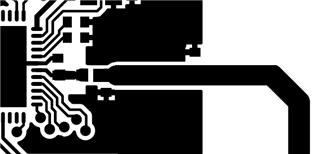We're just finishing our layout for a custom nRF52832 board. According to the "General PCB design guidlines for nRF52 series" we copied the complete nRF layout from your reference design. But the reference design also includes the J1 coaxial connector which is not needed in our product.
So now my question is how to exclude J1 without decreasing the performance or changing the impedance. My first approach would be to delete J1 and extend the transmission line to L1. Can this be done without changing the performance or is there another/better way?

Kind regards


